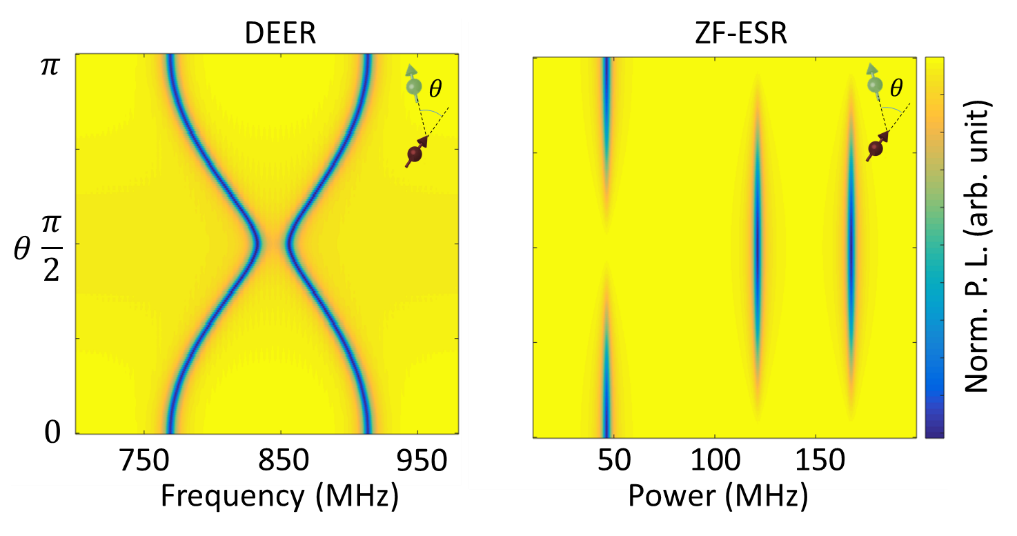Fei Kong and his collaborators proposed and experimentally verified a new electron spin resonance technique which can be performed at zero magnetic field with nanoscale resolution. This work was published in Nature Communications (2018, 9:1563).
Electron spin resonance (ESR) is an important technique for material research. By analyzing the ESR spectrum, many useful information such as molecular structure and dynamics can be extracted. However, in the presence of a magnetic field, the resonance peaks of molecules with different orientations will be different, resulting in spectral line broadening, which will reduce the accuracy of extracted information. This kind of line broadening can be completely eliminated by removing the magnetic field, i.e., deploying zero-field (ZF) ESR, with the cost of reducing detection sensitivity for conventional induction-based ESR. So the conventional ZF-ESR usually require a sample with size of centimeter level, which greatly limits the practical application of ZF-ESR.
By employing a highly sensitive quantum sensor, i.e., NV center in diamond, our group proposed a novel zero-field detection method, which can reduce the demand of sample size to the nanometer level. Using this method, we successfully detected about 4 electron spins in diamond within 15 nanometers around the NV color center, and obtained a clear ZF-ESR spectrum. The hyperfine interaction can be directly extracted from the spectrum. Moreover, we showed that our ZF-ESR method can perform significantly better than the previous NV center-based double electron-electron resonance (DEER) method without loss of sensitivity.
The study will enable practical applications of ZF-ESR spectroscopy at the single-molecule scale, such as investigation of the structure and polarity information in spin-modified organic and biological systems.

Figure |The spectral difference between non-zero field ESR (left) and zero-field ESR (right). In zero field, the positions of the resonance peaks don’t depend on the orientation of target spin, so the spectrum of multiple spins remain clear all the time.